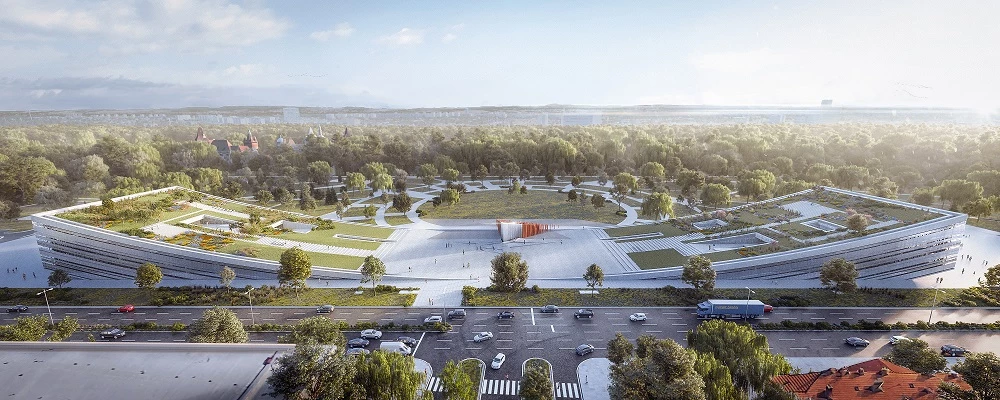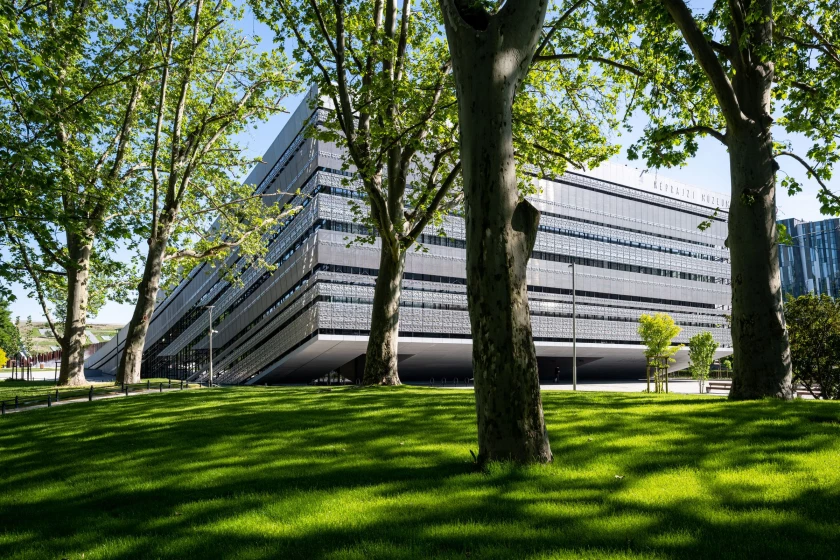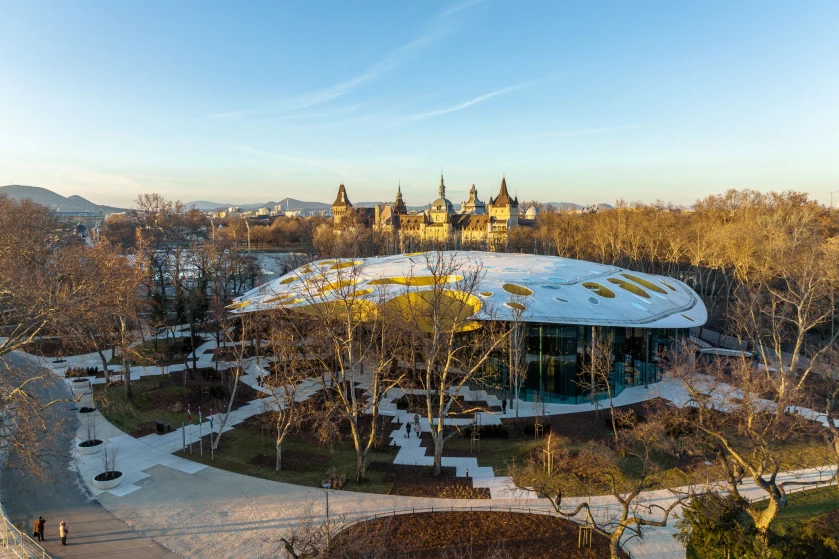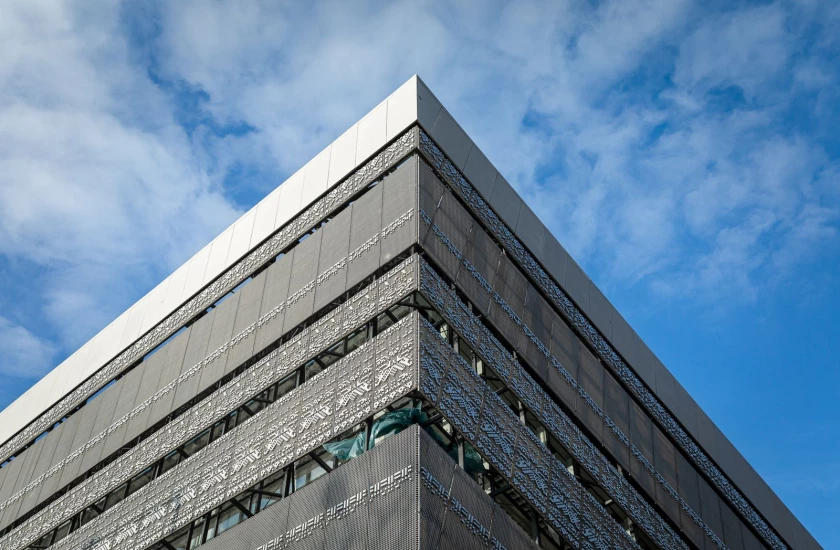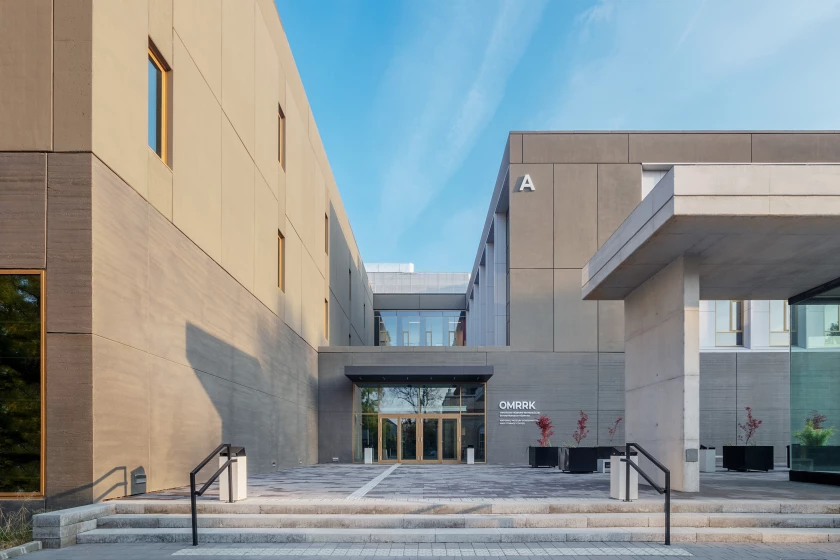The new Museum of Ethnography being constructed as part of the Liget Budapest Project has been named one of the best public buildings in the world.
The new Museum of Ethnography being constructed as part of the Liget Budapest Project has been named one of the best public buildings in the world. The International Property Awards, presented to the best projects in the industry, were distributed to the winners of the various categories in London on 4 December. The prestigious recognition for best in its category was won by the Hungarian architectural firm Napur Architect for the new building planned for the edge of the Városliget, where it is replacing Ötvenhatosok tér ("Square of the '56ers"), which was previously used as a car park.
Now in their 25th year, the International Property Awards are among the biggest, most prestigious and widely recognised accolades in the property profession. An international jury comprising 80 experts adjudicates the awards in ten different categories covering Africa, Asia and Oceania, the Middle East, Canada, the Caribbean region, Central and South America, the United States, Europe and the United Kingdom. In each instance, the body assesses project management, quality, innovation, unique design and dedication to sustainability. Of all the projects entered after winning at the national level, the new Museum of Ethnography building proved to be Europe's top public service building.
The prestigious recognition is not the first international accolade received in connection with the renewal of the Városliget. At the 2017 MIPIM property exhibition and expo in Cannes, the Liget Budapest Project was voted Europe's best major urban development project in the Best Futura Mega Project category presenting the biggest and most comprehensive developments.
The new Museum of Ethnography being constructed as part of the Liget Budapest Project has been named one of the best public buildings in the world. The International Property Awards, presented to the best projects in the industry, were distributed to the winners of the various categories in London on 4 December. The prestigious recognition for best in its category was won by the Hungarian architectural firm Napur Architect for the new building planned for the edge of the Városliget, where it is replacing Ötvenhatosok tér ("Square of the '56ers"), which was previously used as a car park.
Now in their 25th year, the International Property Awards are among the biggest, most prestigious and widely recognised accolades in the property profession. An international jury comprising 80 experts adjudicates the awards in ten different categories covering Africa, Asia and Oceania, the Middle East, Canada, the Caribbean region, Central and South America, the United States, Europe and the United Kingdom. In each instance, the body assesses project management, quality, innovation, unique design and dedication to sustainability. Of all the projects entered after winning at the national level, the new Museum of Ethnography building proved to be Europe's top public service building.
The prestigious recognition is not the first international accolade received in connection with the renewal of the Városliget. At the 2017 MIPIM property exhibition and expo in Cannes, the Liget Budapest Project was voted Europe's best major urban development project in the Best Futura Mega Project category presenting the biggest and most comprehensive developments.
The Liget Budapest Project is Europe's largest cultural development project, for which the aim, from the first moment of the planning process, was to realise a world-class and one-of-a-kind undertaking, even by international standards, emphasised Benedek Gyorgyevics, the CEO of Városliget Zrt., which is responsible for implementing the Liget Budapest Project. Winning the award for Europe's best public building, though, will direct even more international attention to this tourist attraction, which is coming into being in the heart of Budapest as the only development of its kind on the continent. This period is a milestone in the history of the project, since, after several years of preparatory work, construction has now begun – including on the recently recognised Ethnography Museum – along with the rehabilitation of the green space. Thanks to this unparalleled development, visitors will get to enjoy the use of a more attractive urban park, which will also significantly enhance Budapest's position on the European cultural map, the CEO said. Gyorgyevics added that the Liget Budapest Project is providing Hungary's national public collections with an opportunity for institutional development that has not been seen for a hundred years, as the New National Gallery is getting a new building along with the Museum of Ethnography, and the Museum of Fine Arts has undergone a historic renewal.
The construction of Europe's most modern ethnographic museum in the "gateway" to the Városliget, where the car park had been began in December 2017. The work has proceeded according to plan, and now the above-ground construction phase is beginning. The new Museum of Ethnography building designed by the Hungarian architectural firm Napur Architect, which was awarded the commission after it won an international design competition, boasts dynamic yet simple lines while simultaneously taking into account both the Városliget's attributes and its connections to the surrounding urban fabric. The Museum of Ethnography will gain a new and permanent home in the Városliget in this modern, world-class, 34,000 square metre building developed in line with its technical requirements and those of its collection and visitors. This collection, which by now amounts to 250,000 items originating from the Carpathian Basin and every corner of the world, has wandered a great deal since the museum was founded in 1872. The institution has also never operated in a building that was originally developed expressly to meet its needs. This building designed specifically according to the museum's requirements provides the opportunity to display one of the richest ethnographic collections in Europe in a comprehensive and thorough manner.
A team of 250 engineers working under the direction of lead designer Marcel Ferencz developed the blueprints for the new building. The building's layout will significantly aid the museum in its expansive, visitor-friendly and fully modern operations, as well as in presenting – in a spectacular and diverse fashion – its physical and intellectual heritage: the material in its Hungarian and international collection. The facility will include space for a children's museum, a library, archives and a conference room, as well as 2,500 square metres of temporary exhibition space and 4,500 square metres for the permanent exhibition. The building's arced shape will allow it to function almost as a gate and passageway between the city and the park. With 60% of the building underground, the green surfaces covering its roof will attract visitors to the Városliget as a communal space.
